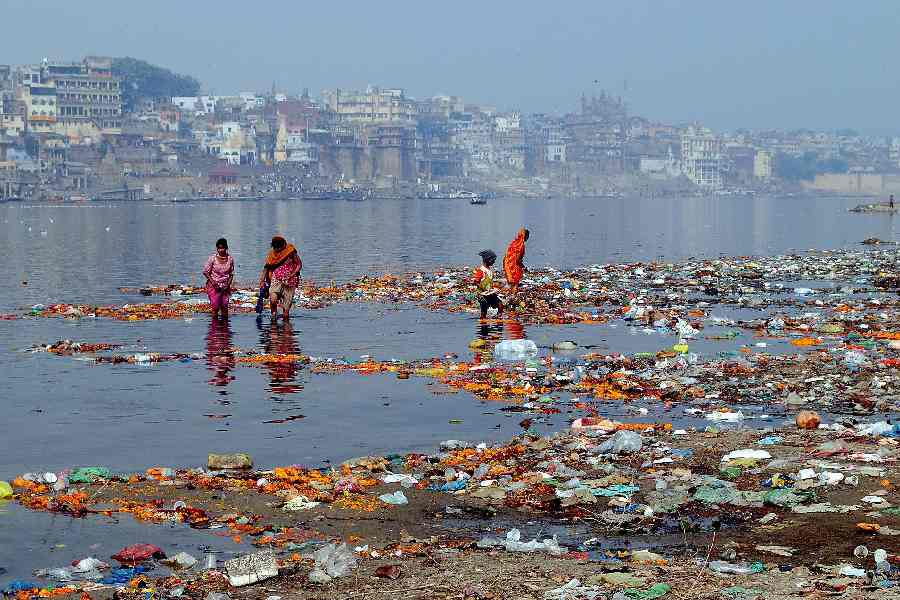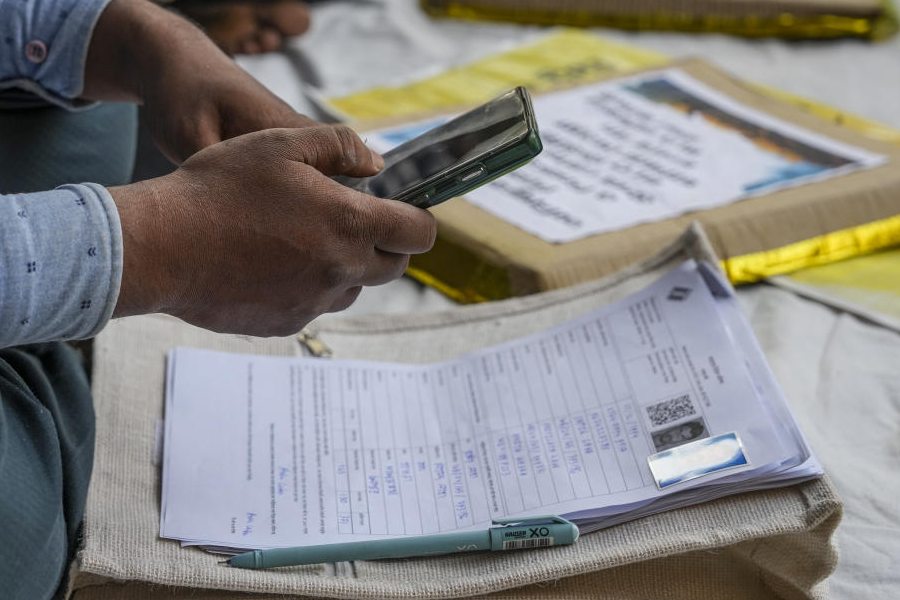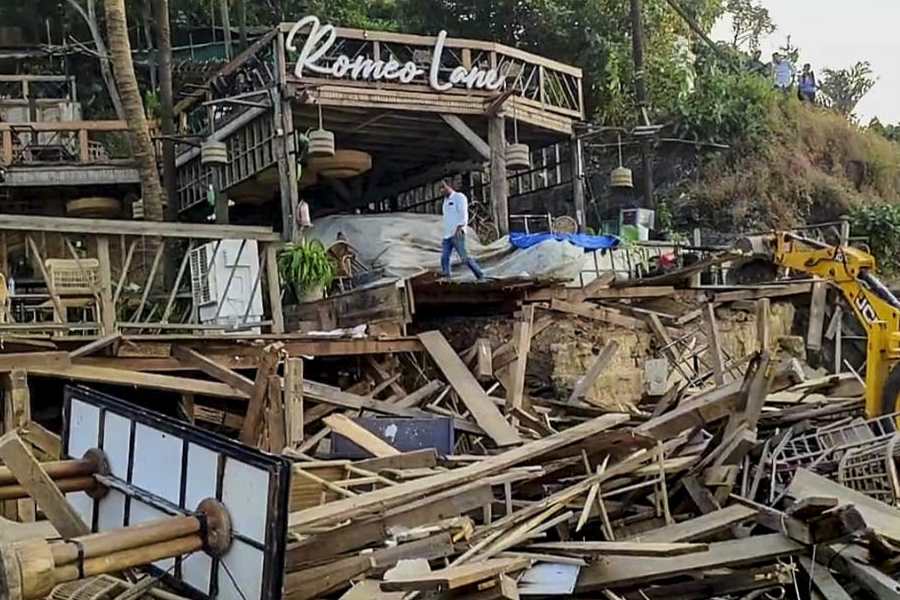Scientists have found microplastic contamination in the water and sediments even in the Ganga’s uppermost stretches between Devprayag and Haridwar — fresh evidence of their ubiquity in what should have been pristine stretches of the river.
The researchers in Dehradun have documented microplastic fibres, films, fragments or microbeads from bags, wrappers, packaging materials or synthetic textiles in every one of 228 water and sediment samples analysed over six months covering pre-monsoon and post-monsoon seasons.
The average microplastic concentration in the water was 325 particles per litre at Devprayag, 822 particles per litre at Rishikesh, and 1,300 particles per litre at Haridwar, increasing downstream.
All water samples from 19 sites between the three towns had microplastic concentrations greater than 175 particles per litre, the average concentration near headwaters of glacier-fed rivers in other countries noted by other scientists in the past.
“We’re seeing the impacts of tourism, adventure camps, pilgrimage and poor management of plastic waste right where the Ganga starts,” Surendra Suthar, professor of environmental science and natural resources at Doon University, Dehradun, who supervised the study, told The Telegraph.
At Devprayag, the Bhagirathi descending from the Gangotri glacier and the Alaknanda originating from the Saopanth and Bhagirath glaciers unite, flowing forward as the Ganga which then travels over 2,300km to empty into the Bay of Bengal.
Multiple studies from across the world have established that microplastics — tiny plastic particles five millimetres or smaller — have become ubiquitous, found in soil, lakes, oceans, inside marine organisms, in Antarctica and in food products.
Suthar and research scholars Manish Chaudhary and Suman Rawat who also conducted field surveys during the sampling noted several garbage dumping sites along the riverbanks of the three towns and plastic debris in areas designated for recreational activities and at wastewater treatment outlet points.
The plastic residues along the river break down through abrasion, erosion, microbial degradation, and chemical processes, the researchers said, reporting their findings in a paper published in the research journal Science of the Total Environment. “Mass bathing during spiritual rituals at river banks also contributes to microplastic loading during the pre-monsoon period,” they wrote.
Lab analysis for the type of microplastics in the water revealed polyethylene, polyamide, polystyrene, polyvinyl chloride, polyethylene terephthalate, polypropylene and polycarbonate. The scientists also calculated the so-called plastic ecological risk index — which takes into account the type of each plastic and its abundance — at each of the 19 sites.
“This is a standard calculation that combines the hazard weightage assigned to each type of polymer and its abundance at a site,” said Chaudhary. The index was in the low-risk category below 150 at only the first two sites near Devprayag but in the hazardous category exceeding 1,200 at all other sites.
“The risk evaluation revealed an exceptionally high level of danger, indicating a severe threat to both riverine species and humans,” the researchers wrote in their paper, calling for improvements in waste management and recycling infrastructure in the region.
Earlier this month, a study by environmental health scientist Mathew Campen at the University of New Mexico in the US and colleagues found that microplastics and nanoplastics accumulate at higher levels in the brain than in the kidneys or liver.










